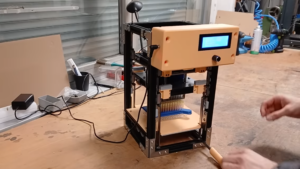
A new development in spectroscopy has emerged as inventor Markus Bindhammer reveals a custom-built xenon lamp designed to improve wavelength calibration. This innovative light source is particularly beneficial for absorbance spectroscopy, thanks to its ability to produce a wide range of wavelengths.
The calibration of a spectrometer is essential for its accurate functioning. Traditionally, this process involves using a known light source to identify specific peaks or dips in the light spectrum, which serve as reference points. While many hobbyists rely on a mercury-vapor fluorescent light for this purpose, Bindhammer’s xenon bulb offers a more versatile alternative. This source generates not only visible light but also characteristic spikes in the infrared region, enhancing its utility in various spectroscopy applications.
Bindhammer utilized an H7 xenon bulb, originally designed for vehicle headlights, as the core component of his light source. The setup features a concave mirror positioned behind the bulb to reflect light, alongside a pair of converging lenses placed in front. These lenses focus the emitted light onto the end of an optical cable made from PMMA, which is known for its superior transmission of ultraviolet light. The entire assembly is stabilized with aluminum brackets, while an aluminum case houses the components, ensuring durability and optimal performance.
To manage heat generated during operation, the design incorporates a fan at one end of the case. A light trap is also installed to prevent stray light from escaping through the fan’s outlet, which is crucial for maintaining calibration accuracy. Although Bindhammer has yet to test this light source with his unique spectrometer, initial observations suggest it will perform effectively.
This project highlights the potential of amateur innovation in scientific instrumentation. While a variety of homemade spectrometers have been showcased, the exploration of commercial scientific light sources remains equally significant. The advent of Bindhammer’s xenon lamp may inspire further advancements in the field, bridging the gap between amateur and professional spectroscopic practices.
As the field of spectroscopy continues to evolve, innovations like Bindhammer’s will likely play a pivotal role in enhancing measurement accuracy and expanding the capabilities of spectrometers used in both educational and professional settings.






